 |
SRGC Bulb Log Diary |
| Home Recommend This Site To A Friend |
|
NUMBER 4 23rd JANUARY 2004
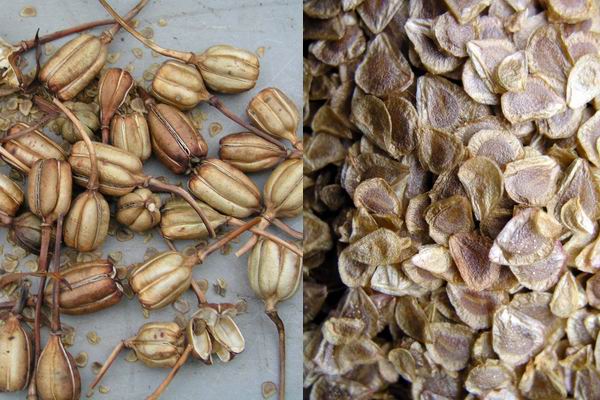
Lily seed This week I got around to sowing the late flowering lily seed. This includes L. nanum , L. mackliniae and the Nomocharis. I store the seed still in the dried seed capsules in paper bags on a shelf in the bulb shed until I sow them. This way the seed does not dry out too much and we get an excellent rate of germination. 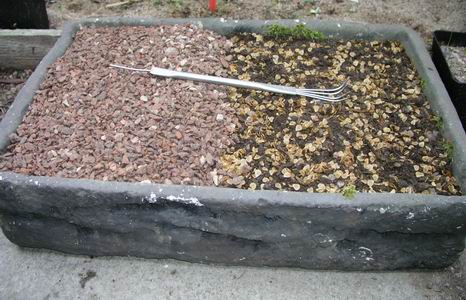
Lily seed fish box When we are sowing large quantities we use the every-ready fish box, what did we do before them? I scatter the seed roughly over the surface and then gently rake it in, with the miniature rake that I made, until it is evenly spread around, then I add a good layer of 6mm gravel. This box will not be emptied out until the bulbs start to flower in three to four years from now. You can flower some of these lilies in two years if you feed them well and move the seedlings into fresh compost each year but we sow a box every second year so we always have some reaching flowering size. 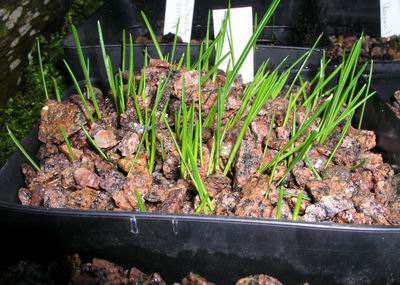
Crocus laevigatus seedlings In the outside seed frames a pot of Crocus laevigatus seedlings have appeared for their second showing. These were sown at depth in September 02. They will be repotted for the first time this summer and I will be looking for the first of them to start flowering this autumn. 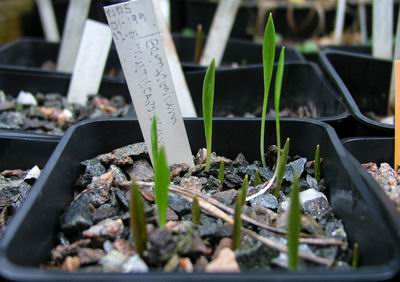
Erythronium multiscapoideum Also in the seed area a pot of un-flowered seedlings of Erythronium multiscapoideum are well through now - this species is always the first of the erythroniums to appear and other pots containing flowering sized bulbs are also showing now. 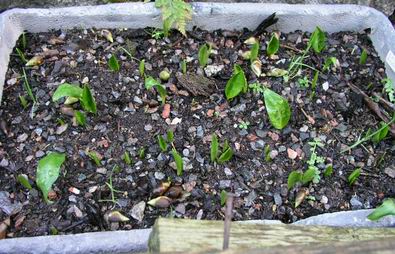
Erythronium revolutum A box with a bunch of Erythronium revolutum bulbs, that we had in the fridge from late July until late August, is showing way ahead of the time I would normally expect to see them. This cool storage through the summer definitely makes most bulbs appear earlier the following spring. 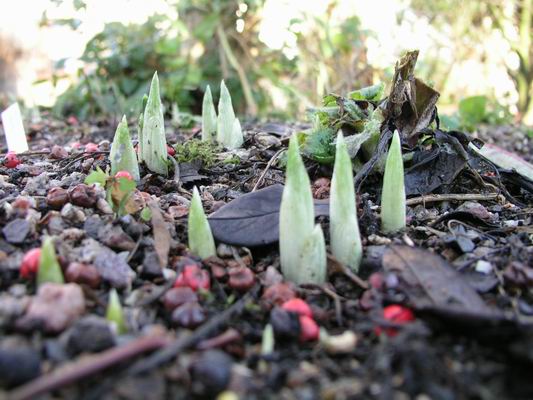
Iris 'Katharine Hodgkin' In the garden the shoots of Iris 'Katharine Hodgkin' are ready to burst into flower as soon as we get a period of sunshine - something we have not seen for over a week now as we are having a period of very dreich weather. ( dreich - a Scottish word for wet, dark and miserable.) 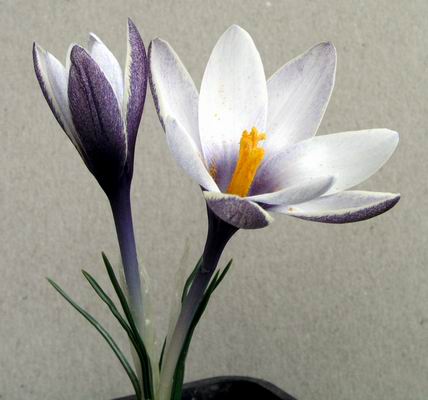
Crocus michelsonii 2. Having been chastised for being rude about a crocus last week I will go overboard with praise for Crocus michelsonii - it has to be one of the prettiest. The best forms have a very dark tube, this colour continuing up the outer three tepals and it also appears on the inside of the flower in a zone around the throat. It is a stunning plant and the only bad thing that I can find to say about it is that it has never split for me, we have had a single bulb since 1997. It has however set seed for us on three occasions so we do have seedlings coming along - will they have such good markings as their parent? 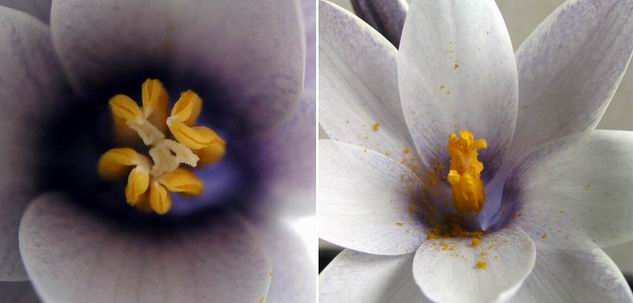
Crocus anthers opening. I was fascinated looking at the anthers in this picture which are just starting to dehisce (split open to reveal the pollen) on the left and with the pollen flowing freely on the right. Now then, the very sharp-eyed and observant amongst you, should have noticed by now that there is something odd about this crocus. 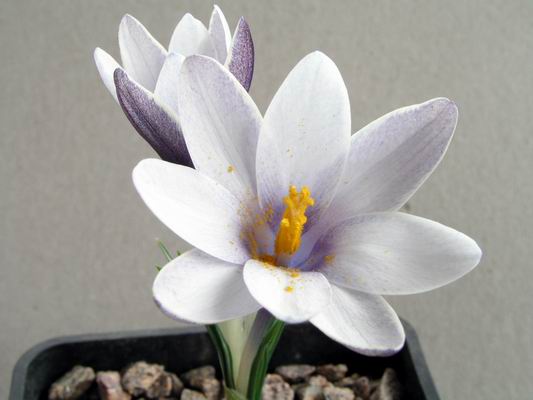
Crocus michelsonii 3. Count the tepals - yes there are eight when there should only be six (three inner ones and three outer ones), and there is an extra stamen giving us four instead of three so this is a mutation. I checked back to pictures I have taken of this plant in previous years and this is the first time that it has had extra parts. These mutations do appear fairly often in bulbs but they do not often become fixed so that they appear every year. I am going to leave you this week with another unusual bulb, well I think it is usual but I am no expert on snow drops. 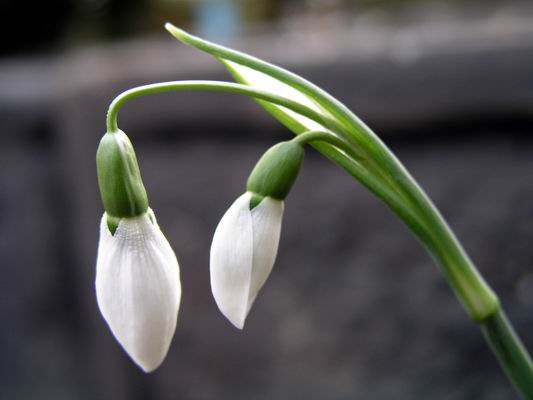
Galanthus elwesii. The question I leave you with is : do many galanthus produce twin flowers from a single stem, like in this elwesii, or is this also a mutation that will not repeat it self next year ? Answers and comments to the bulb log feed back on the forum please. ^ back to the top ^ |